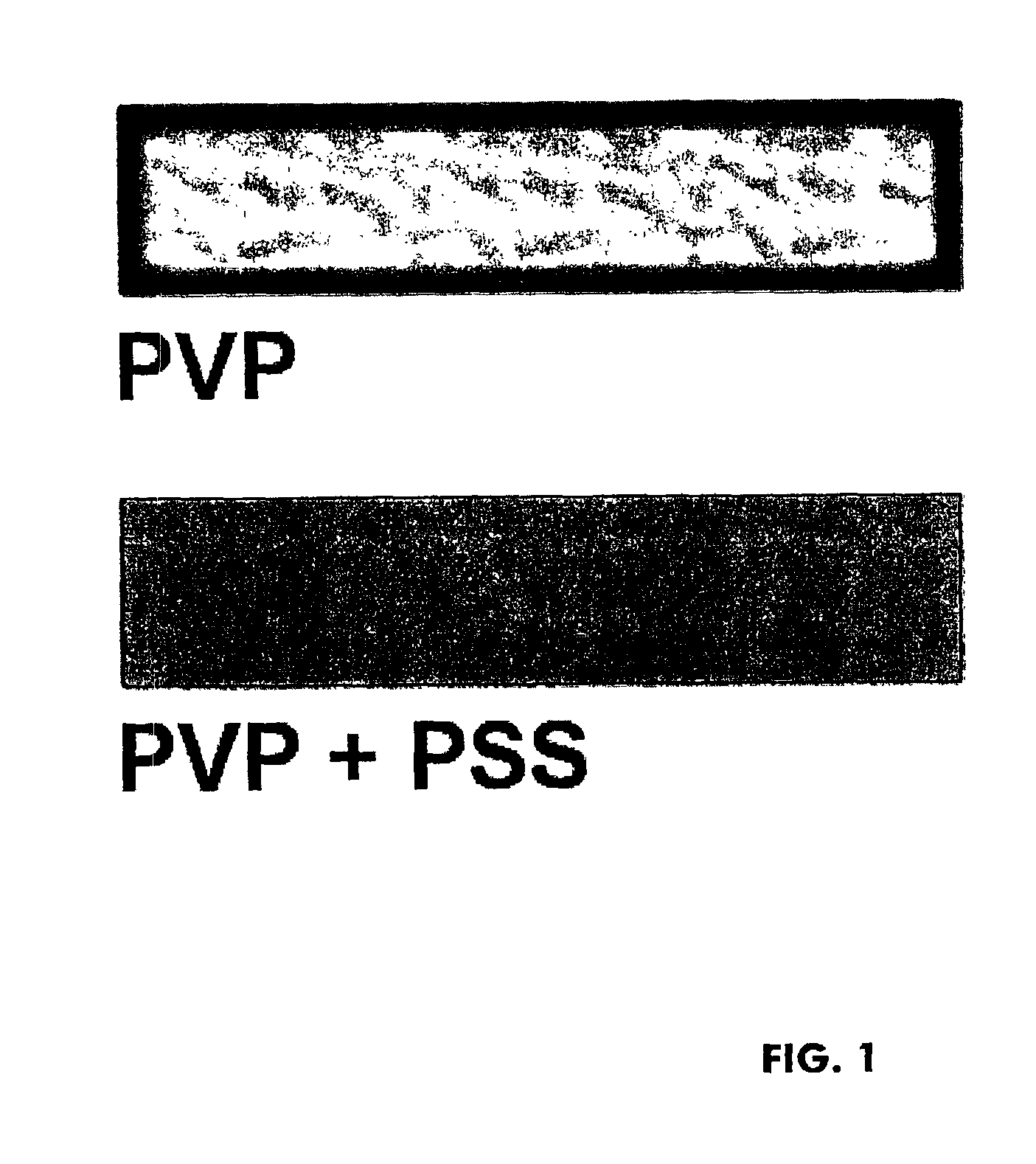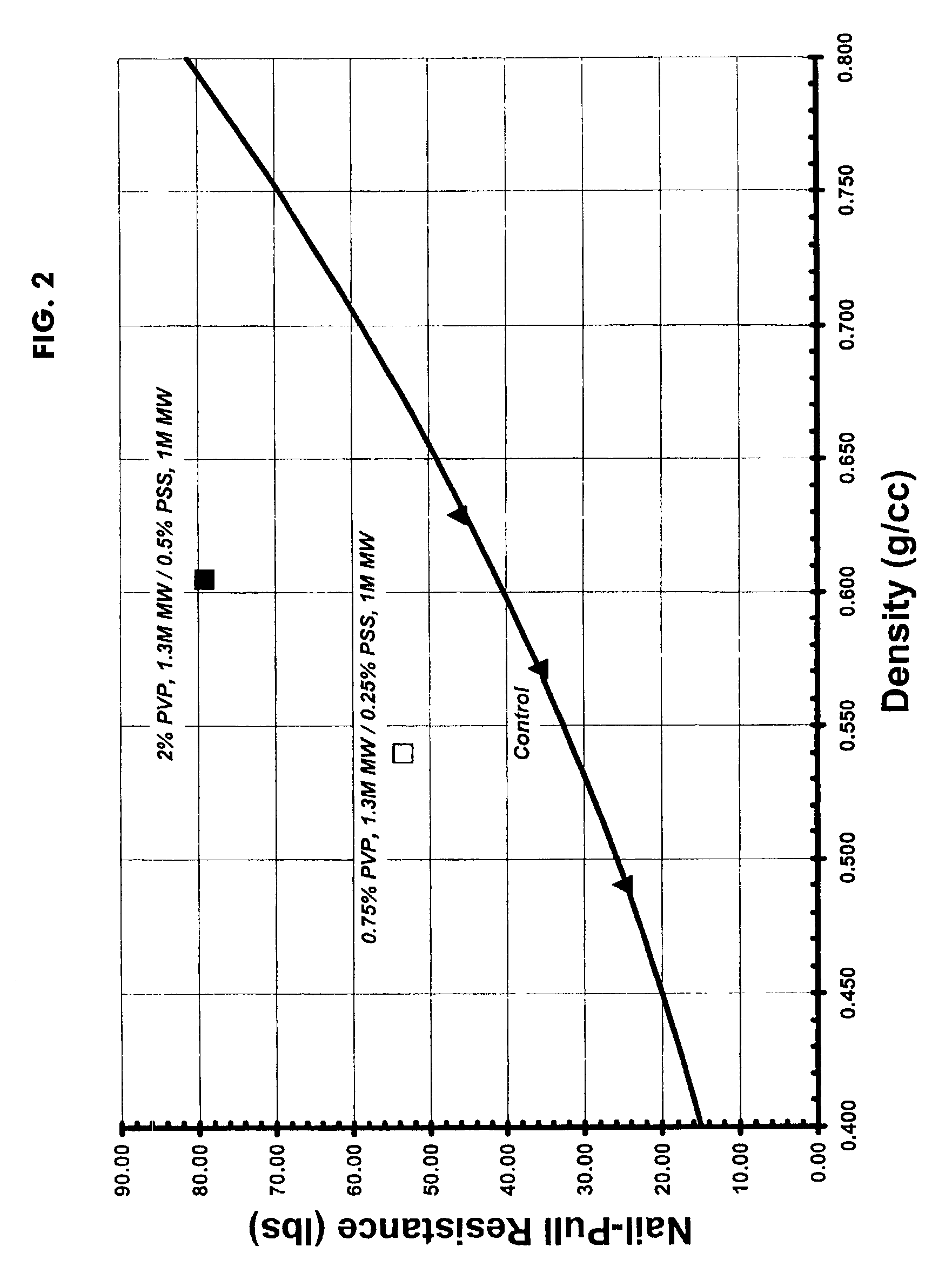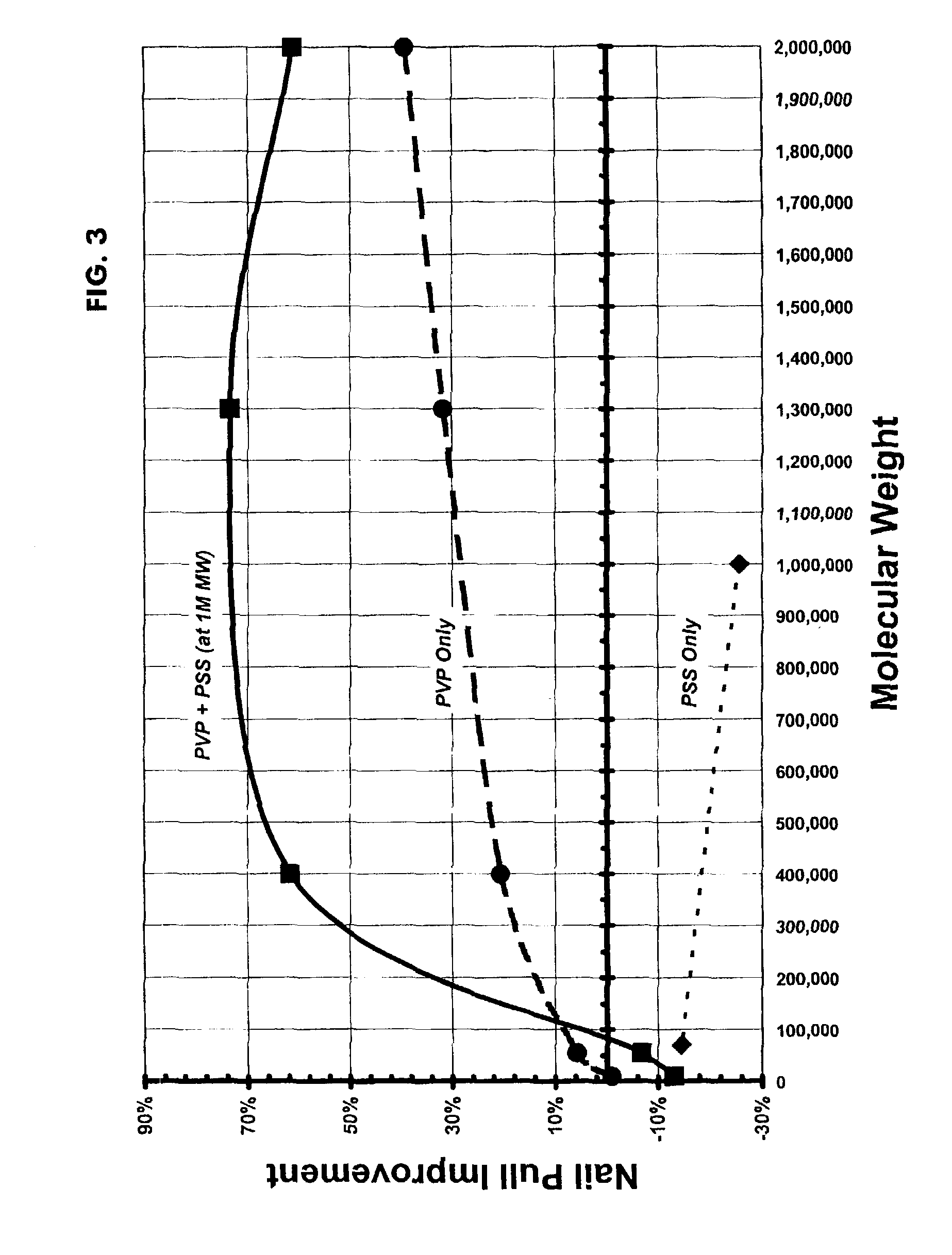Method and composition for polymer-reinforced composite cementitious construction material
a technology of composite cementitious and composite cement, which is applied in the direction of ceramicware, other domestic articles, building components, etc., can solve the problems of high production, installation and building costs, paper is by far the most expensive component of wallboard manufacture, and contributes more than 40% to manufacturing costs, so as to reduce environmental impact on human health, reduce overall construction costs, and improve material properties
- Summary
- Abstract
- Description
- Claims
- Application Information
AI Technical Summary
Benefits of technology
Problems solved by technology
Method used
Image
Examples
Embodiment Construction
[0029]The present invention will now be described in detail for specific embodiments of the invention. These embodiments are intended only as illustrative examples and the invention is not to be limited thereto.
[0030]In one embodiment, the polymer-reinforced composite cementitious construction material comprises a cementitious material, such as a gypsum or a cement, for example, and a polymer composition formed by combining a strengthening component and a crosslinking component. It is believed, without limiting the invention in any way, that the crosslinking component acts upon the strengthening component to crosslink the strengthening component in situ, causing a superior distribution of the strengthening component and establishing an intimate interaction between the strengthening component and the inorganic particles.
[0031]In one embodiment, small additions of strengthening polymers act synergistically with a crosslinking component, achieving a surprising and unexpected increase i...
PUM
| Property | Measurement | Unit |
|---|---|---|
| Temperature | aaaaa | aaaaa |
| Length | aaaaa | aaaaa |
| Thickness | aaaaa | aaaaa |
Abstract
Description
Claims
Application Information
 Login to View More
Login to View More - R&D
- Intellectual Property
- Life Sciences
- Materials
- Tech Scout
- Unparalleled Data Quality
- Higher Quality Content
- 60% Fewer Hallucinations
Browse by: Latest US Patents, China's latest patents, Technical Efficacy Thesaurus, Application Domain, Technology Topic, Popular Technical Reports.
© 2025 PatSnap. All rights reserved.Legal|Privacy policy|Modern Slavery Act Transparency Statement|Sitemap|About US| Contact US: help@patsnap.com



